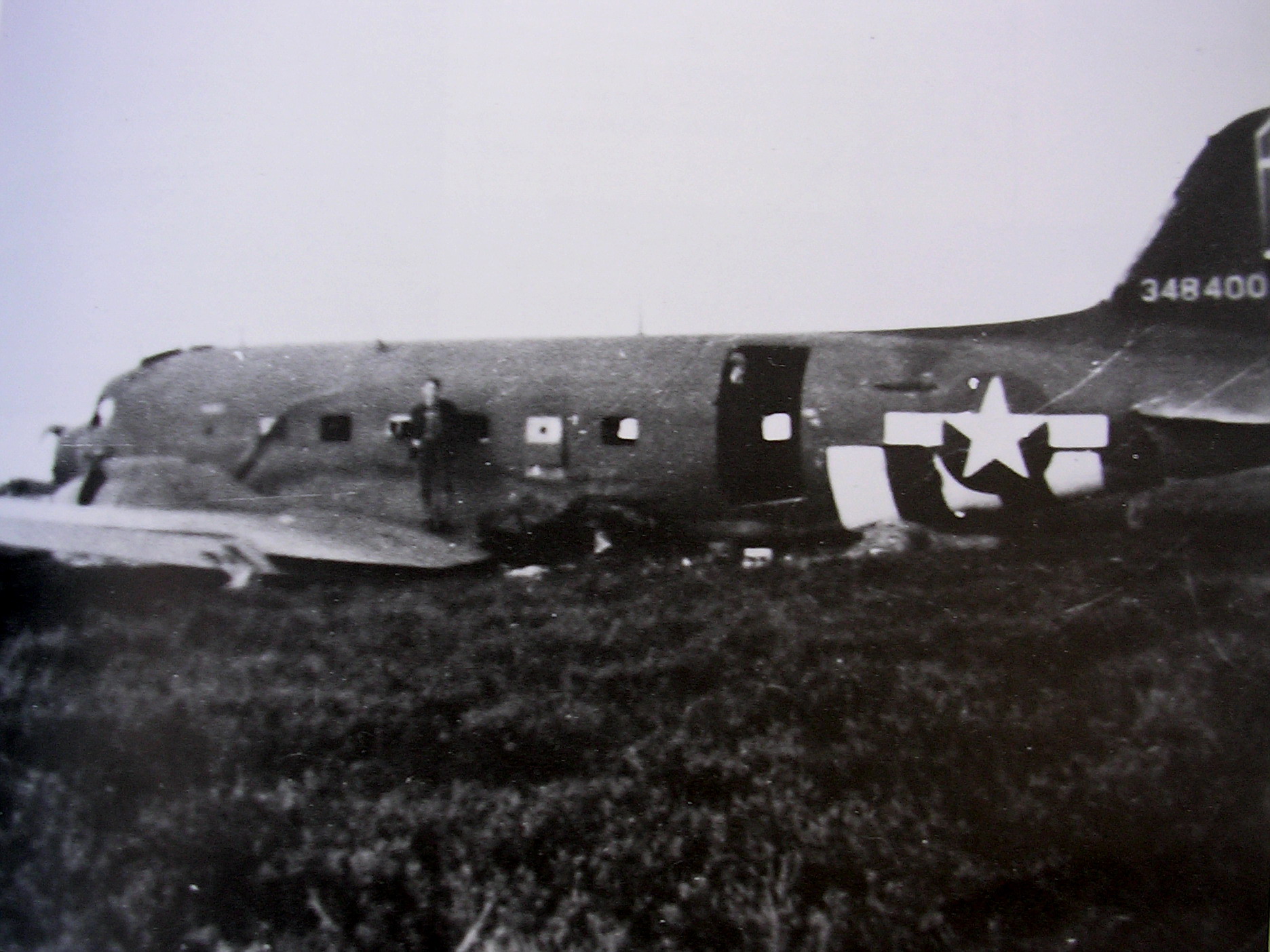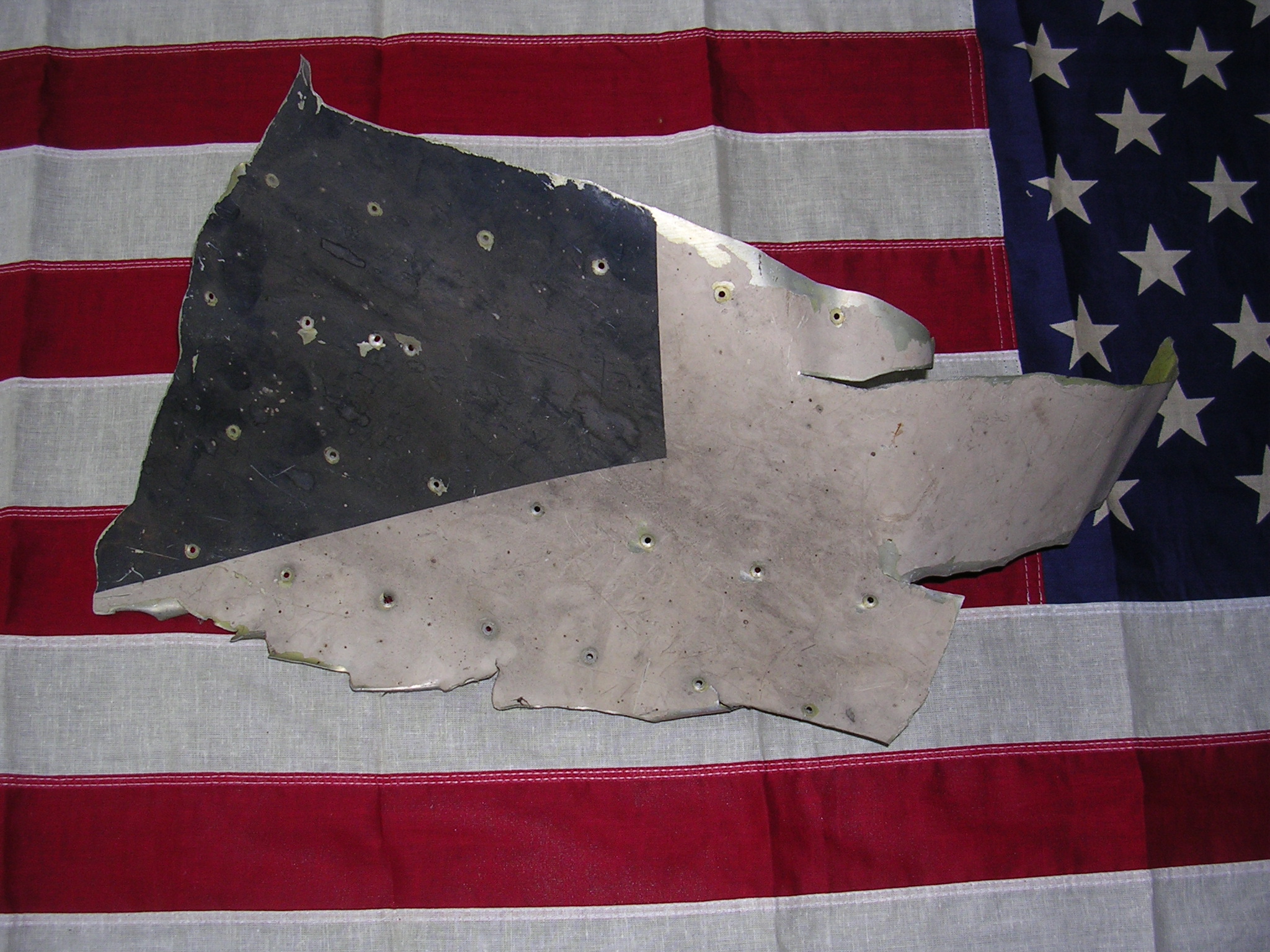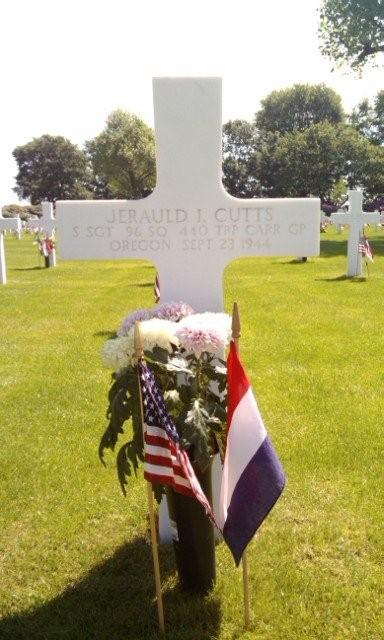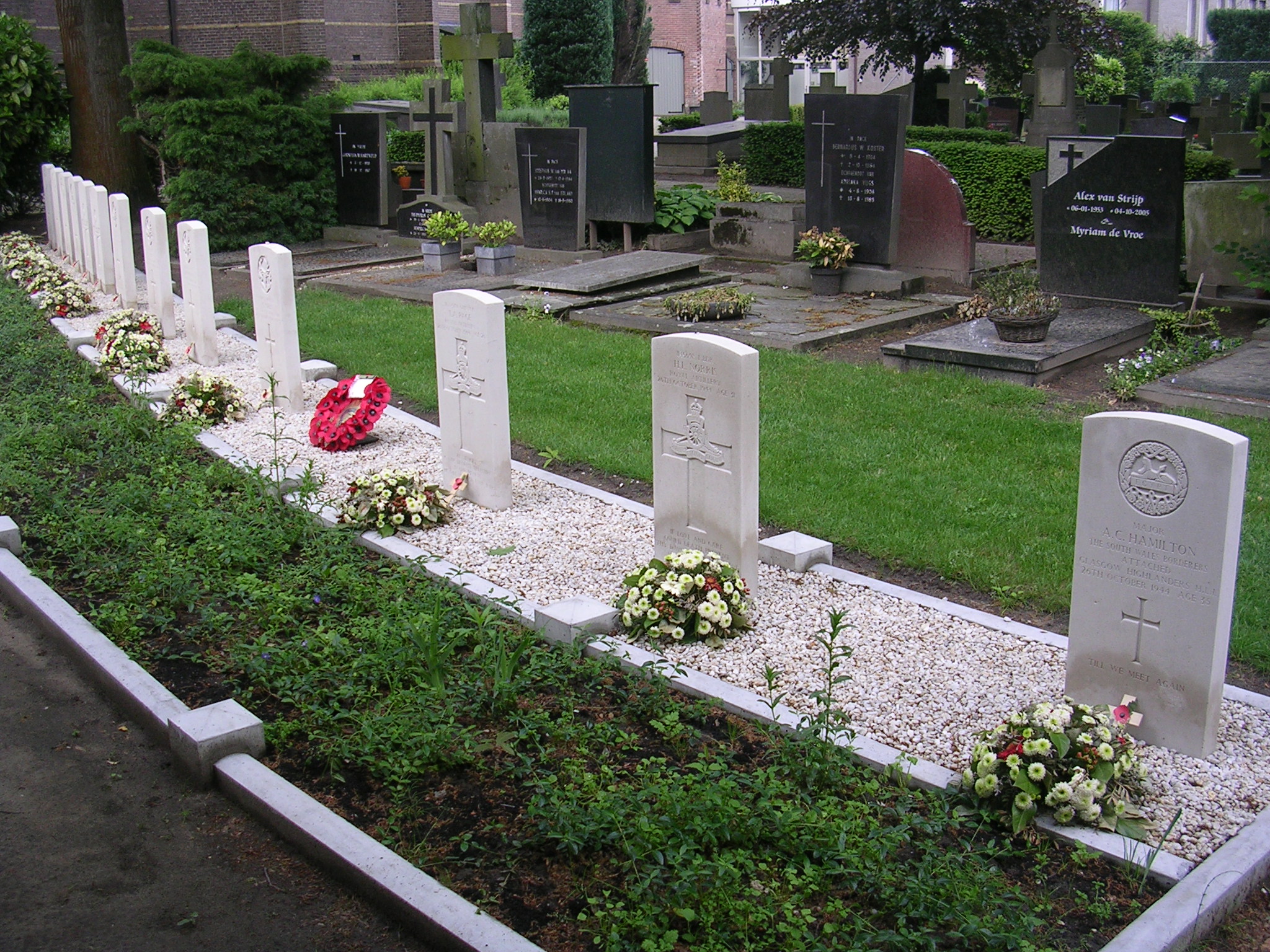On September 23, 1944 during Operation Market-Garden this C-47B, 43-48400 was hit by ground fire and crash landed at 61.07 on a heather outside of my village.
This Dakota designated to tow a glider with troopers of the 82 airborne division got hit by ground fire South, West of their initial point Schijndel in Holland.
This C47B was part of 440 Troop Carrier Group. 96th Troop Carrier Squadron, 6Z.
Flew that day from Exeter, Devon, England/USA AF Sta 463. Mission Combat Market, A-91.
The 440 TCG was under command by Group Commander Lt Col Frank X. Kreds.
The Squadron Co was Major Cooper.
Their mission was to tow the glider to Landing-Zone O near Groesbeek, NW of Arnhem.
ETA 16.15, route South of Antwerp, West of Eindhoven And the LZ was practically on the border of Holland and Germany.
The crew onboard where:
Pilot Major, William R. Cooper, 0-520488, Santa anna-California,
Co Pilot 2nd LT Lawrence L. Altermatt, 0-705208, Joplin-Missouri
Navigator 1st LT, Harvey I. Wardell, 0-809464, Longbeach-New jersey
Engineer S/SGT Gilbert A. Scherer, 17121526, Saint Joplin-Missouri
Radio Operator S/SGT Jerauld I Cutts, 19136125, Lebanan-Oregon
This crew flew in to Normandy on June 6, 3/506th, C/326th AEBn and missions to Southern France and Holland before.
The Radio Operator S/SGT Jerauld I Cutts was just new with this crew.
He came from 302nd Troop Carrier Squadron.
In June 1944 he flew with “A” Flight(3) Plane 43-15067 Chalk 84
The Dakota flying as lead plane was hit just before the turn point at the IP under the left wing when it flew trough intense ground fire.
A heavy black trail of smoke of oil was emitted from his left engine.
The glider on tow was set free in flight and landed behind enemy lines.
Pilot Major, William R. Cooper then made a down and out left under control and decent was being made at last sight heading in to direction of Brussel, Belgium.
Bailing out was out off the question because the plane was to low and loosing height fast so the pilot, Major Cooper decided to make a controlled crash landing.
During the ground fire Radio Operator S/SGT Jerauld I Cutts, was severely wounded to the head by flak while being in the navigator compartment..
The rest of the crew seemed oke and made ready for the crash-landing.
Cooper made a crash landing behind enemy lines in an area of heather called, the small Oisterwijk heather (kleine Oisterwijkse heide) close to the Oirschotsebaan (street name) just outside the small village called Oisterwijk about 15 mile West of Eindhoven.
During this rough crash-landing on the belly of the plane S/SGT Cutts suffered more internal injuries while the crew chief in the rear suffered a head wound.
The navigator in the baggage compartment, pilot and co-pilot seated in the cockpit suffered slight wounds.
After the plane came to a halt on the heather some farmers and civilians who witnessed the crash-landing directly went up to the plane.
Some out of curiosity others the help the crew that were just coming out of the plane that moment.
A farmer called Willem van Baast from farmhouse ‘De Loght’ a farm close by is on the crash site almost immediately.
Farmer Willem van Baast a person already helpful to the underground for their resistance activities wants to help.
His farm, a hide out for people who are in hiding for the Germans during that period could provide these airman a temporary shelter he must be thinking.
Now that he is eye to eye with these airman he thinks it’s a duty to give them a safe shelter.
All of a sudden a group of soldiers from the German Wehrmacht are seen coming to the site from a distance.
Now there is panic and everybody that is near to the plane take a run for it.
The Germans react and start shooting on the crew hereby hitting S/SGT Cutts fatally while he is beside the plane.
While being shot at the rest of the crew also take a run for it fearing for their lives while leaving S/SGT Cutts at the site.
They are led by Farmer Willem van Baast from the seen into the direction of the Oisterwijk forest surrounding the village.
It is not for long because they run strait in to the hands of other Germans soldiers coming to the crash-site and the crew and farmer are stopped.
Knowing the danger farmer Willem van Baast who is leading Major Cooper and his men runs away but is shot by the Germans while on the run.
He becomes severely wounded and is taken prisoner by the Germans close by the farm of farmer H Schoonus.
The crew become prisoners and are transported to Oisterwijk not knowing the condition of S/SGT Cutts.
In the meantime that all of this is happening some civilians are taken prisoner near the planes crash site accused by the Germans off ‘helping the enemy’.
S/SGT Cutts appears to have died at the spot after a fatal German shot and is buried beside the plane.
The civilians however who where being accused of ‘helping the enemy’ and taken prisoner are released later that evening by the Germans.
The crew that are taken prisoner and now in Oisterwijk are told that S/SGT Cutts has died of his head wound, nothing is said of the fact he was killed by a fatal German shot.
The crew chief is treated for his head injury in the local German field hospital in Oisterwijk.
Later the crew is told S/SGT Cutts was removed to the nearest hospital and buried with deceased hospital patients.
The farmer Willem van Baast who was severely wounded and bleeding heavily died that same day when he was transported on a wooden cart to the nearby village of Spoordonk.
The Germans didn’t allow a doctor near Willem van Baast.
A few day’s after all this some Dutch place a pine wooden cross and American helmed on the field grave off S/SGT Cutts.
Still a few day’s later the body off S/SGT Cutts is removed from the site by the German authorities and buried on the cemetery of the st Petrus Banden in Oisterwijk.
At this cemetery where the Germans also buried there own dead killed during this period of the war more American’s are buried.
The fore occupants of the Jeep carrying Waco glider ‘Queen-City’ are also buried here.
This glider was shot down on September 18, 1944 during the second day of Market-Garden.
Their names are:
McCann, Noel Clarence. Pilot f/o Nr.T122016
Hiltunen, Ray J. 1e.Lt. Nr.01103214
Le may, Robert J. Tec./5 Nr.36239073
Carson, Raymond L. Driver/Pvt. Nr.36176352
Later in 1946 all where relocated to the American cemetery in Margraten, Holland.
The crew of the Dakota ended up in Barth, Germany in Stalag Luft 1, a prison camp for Allied Airmen and survived the war.
Radio Operator S/SGT Jerauld I Cutts was awarded the Air Medal with Oak Leaf Cluster and Purple Heart.
The Dakota 43-48400 still remained at the crash-site for quite some time.
Of course the Germans took the time to investigate the plane.
Witnesses later told, on the wings there was some demolished receiving equipment left behind by the Germans from an opened radio panel.
Further on some bushes of straw and wooden clumps were lying around.
Inside the plane it was a big mess but still an American helmed was found and taken as a souvenir.
One witness that I interviewed told me you could also stand on the wings a move the plane up and down.
He even took a piece of the fuselage that he ripped of from the side of the plane, just where the white star was painted.
After the war farmer Willem van Baast was posthumously thanked by the American President Truman for giving aid to American service men and helping in their escape.
After the war his name was engraved on a memorial plaque that is placed in a little chapel dedicated to the Holy Marie.
On this plaque the names are engraved of all the civilians and allied soldiers who died during the German occupation and as a result of our liberation.
Strangely several names where forgotten on this plaque and sadly one is those Radio Operator S/SGT Jerauld I Cutts and several Scottish soldiers.
The Dakota, 43-48400 was on the heather for quit some time until the end of the war because during the spring of 1945 after liberation a British Tempest made a successful crash landing on that same heather.
This plane crash landed without lots of damage about a 100 meters from the Dakota and was guarded by some MP’s
What happened to the pilot of this Tempest ore his plane and the American Dakota is not known.
If the glider on tow by the 43-48400 with troopers on board of the 82 Airborne was to have made a left turn when cut lose it possible landed somewhere near Boxtel.
Boxtel is a village close to Oisterwijk and the two villages are separated by forest and heather.
In this heather called The Kampina the local resistance of those two villages had put numerous of Airborne’s in to hiding during and after Market-Garden.
Those Airborne’s who made an early landing in these surroundings where put in this heather until October 1944 when the area was liberated by the 15 Scottish Division and 51 Highland Division.
So it could be possible that also these Airborne’s ended up in this heather.
I have some pictures from an old book of 82 Airborne troopers and other army men hiding in that heather.
There’s even a little monument erected near the heather to commemorate those of the underground who hid them and those who where hiding.
Under these soldiers where British Airborne and American 101st, 82nd Airborne.
Peter.
Major Coopers Dakota on the heather in late October, 1944 after Liberation.
This is a piece of the fuselage that I have, note the white paint of the star.
Memorial Day, 2009 Margraten cemetery, grave of Radio Operator S/SGT Jerauld I. Cutts.
Special thanks' to Ronald Stassen, Relive History 44-45.
Commonwealth war graves in Oisterwijk, note the empty spots of relocated soldiers after the war.
If there's any one who can add something to this story please let me know.








